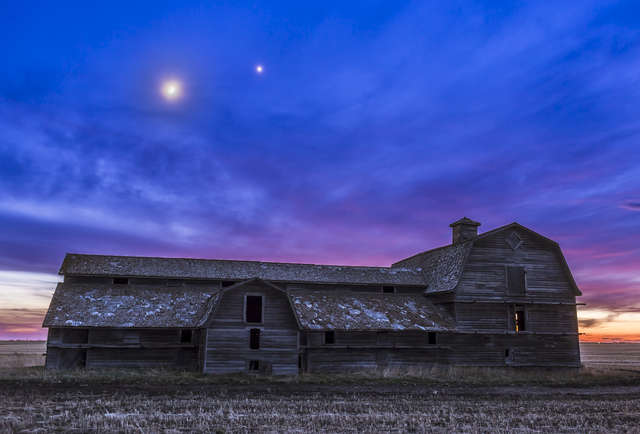
It’s a great night to take a stroll and casually view the stars. The two brightest objects in Earth’s sky besides the sun, Venus and the moon, will meet on the evening of July 15.
On Sunday night, a waxing crescent moon will sit just to the right of Venus. On the east coast, the two orbs will be two degrees apart by “mid-twilight,” reports Space.com. In the Western US, they’ll be half as far apart, creating an even more striking image.
The pair will hang together until about 10:30pm local time when they set. You’ll be able to see Venus with the naked eye, but the view, as ever, will be more spectacular if you break out binoculars or a telescope. The event should be easy to track down in the sky if it’s not a cloudy evening because, well, it’s the moon. However, if you’re having difficulties, the duo will sit in the western sky.
With the short period of time before the moon sets, you’ll probably get the best view about 30-60 minutes after sunset. From sunset on, the pair will be sinking in the sky and could be obscured by buildings on the horizon if you wait too long to get outside.
Additionally, with the crescent moon so slight, you may notice a dim glow to the dark portion of the moon. The effect is called earthshine. It’s caused by the sun reflecting off the Earth and lighting up the lunar night. (Pretty much the same as how the moon can light up the earth in the middle of the night.) Just like any other time you’re out stargazing, you’ll get a better view if you get away from the light pollution of the city. However, both objects are so bright you shouldn’t have any trouble spotting them.
If you miss the display, the two will be in relatively close proximity to each other for a few more nights, but Sunday will definitely be the closest you’ll see them. Otherwise, you don’t have to feel left out. There are lots of great stargazing events in the coming weeks. We’re not far from the longest-ever Blood Moon, Mars making its closest approach since 2003, and the Delta Aquarid Meteor Shower.

